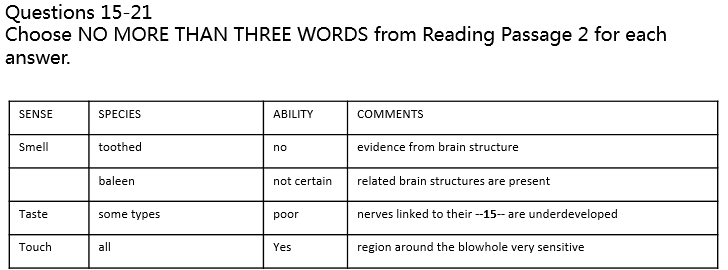雅思阅读分为A类和G类两大类,两类阅读题目不相同,准备出国留学的同学一般会选择考A类雅思,阅读题目自然也是A类。下面小编就和大家分享雅思A类阅读精读和泛读攻略详解,来欣赏一下吧。
雅思A类阅读精读和泛读攻略详解
一. 雅思A类阅读和G类阅读区别
在探讨备考攻略之前,我们先来简单了解一下雅思A类阅读和G类阅读的区别。雅思A类考试是学术类考试,雅思G类考试是培训类考试,两者在阅读版块的考试是不一样的,使用的试卷不同,另外阅读题型也略有不同,但是考试时间和阅读数量是一样的。接下来,我们来一起来看看如何备考雅思A类阅读。
二. 雅思A类阅读如何备考
1. 一定要做精读练习
备考雅思A类阅读一定要做精读练习。为什么?因为A类阅读对大家阅读能力要求较高,如果只是一味做题对于文章理解力提升帮助不大,而精读练习可以帮助大家透彻理解文章,把握出题规律。
做精读练习材料建议选择剑雅真题,精读练习中重点把握阅读文章中的生词、长难句和文章结构。词汇和长难句建议整理出来并记录,方便以后随时复习。至于文章篇章结构要重点把握因果段落和转折段落,因为这两类是雅思A类阅读经常出题的地方,一定要重点去读,分析出题套路。
2. 泛读练习读什么
雅思阅读还考察大家快速阅读理解文章的能力,所以要做泛读练习来提升自己的英文理解力和阅读速度。泛读的时候建议大家锻炼自己跳读和略读能力,快速把握文章主旨和段落大意。泛读材料可选的有很多,基本标准可参照雅思A类阅读文章的难度,选读一些国外原版的期刊杂志,如果实在找不到泛读材料也可以使用雅思A类阅读机经做泛读练习。雅思阅读机经是根据以往的阅读考题总结出来的,总体上来文章难度与雅思A类阅读相差不大,而机经的备考价值远比不上剑雅真题,所以可以用剑雅真题做精读,用雅思阅读机经做泛读练习。
雅思A类阅读备考不仅要做好精读练习,也要做好泛读练习。精读练习中重点把握生词、长难句和文章结构;泛读练习重点训练自己的跳读和略读能力,确保在考试中能够快速找到关键信息,快速理解文章和段落主旨。
雅思阅读材料:“来自星星的你”为什么会火?
Beer and fried chicken — this seemingly unorthodox combo has been the most sought after late-night snack recently in Yang Xiaoqian’s dormitory on the campus of Central China Normal University.
炸鸡和啤酒,这个看似怪异的搭配,最近竟成了华中师范大学学生杨晓青(音译)宿舍里最受追捧的夜宵。
“All of a sudden, on the tables of many dorms and in Weibo and Weixin (or WeChat) updates, the combo went viral,” says Yang, 19, a Chinese literature major at the university in Wuhan, Hubei province.
“突然间,宿舍的桌上、微博和微信上,这种吃法一下子火了。”华中师范大学中文系学生、19岁的杨晓青这样说道。
Thanks to a South Korean drama currently on air, Man From the Stars, this new mix-and-match junk food trend has become popular among young audiences, despite its unhealthy nature.
因为正在热播的韩剧《来自星星的你》的关系,这一垃圾食品的全新混搭组合尽管有害健康,但还是受到年轻观众的追捧。
Indeed, South Korean TV dramas, or K-drama for short, have been a major force in the South Korean pop-culture wave that has captured the hearts of young Chinese audiences.
的确,韩国电视剧(简称:韩剧),已成为推动韩国流行文化潮流的主力军,成功虏获了中国年轻观众的心。
According to iQiyi, a video website that features Man From the Stars, by Feb 15, the number of views for the TV drama hit a whopping 370 million in China, where the drama claimed four out of five hot topics spots on TV and on Sina Weibo on the same day.
来自播放《来自星星的你》的视频网站爱奇艺的数据显示,截止到2月15日,该剧在国内的累计播放量达到3.7亿次,与此同时,电视和新浪微博上五分之四的热点话题都被该剧占据。
Yan Feng, professor of Chinese literature at Fudan University, in an interview with Shanghai Morning Post, believes the new wave of South Korean drama is trying to attract a wider audience.
复旦大学中文系教授严峰在接受《新闻晨报》采访时表示,新一轮的韩剧风潮正在吸引更多的观众群体。
“It is interesting to explore what elements of those dramas appeal to audiences. It’s obviously more than just pretty faces and cool poses,” says Yan.
严峰表示,“探寻这些韩剧走红的因素是个有趣的过程。显然,韩剧的背后不仅仅是俊男美女和帅气造型”。
Echoed by audiences, culture critics, academics and insiders of the industry, youth fantasy, creative storylines, cultural proximity, and well-organized production all add up to K-drama’s recipe for success, along with, of course, those handsome and cute faces dressed in the latest fashion trends.
从观众、文化评论家、学者以及业内人士的口中我们可以了解到,青春幻想、创意剧情、文化相似以及制作精良都是韩剧的成功秘诀,当然,更少不了衣着时尚光鲜的俊男美女。
Pretty faces and fashion
俊男美女与时尚的组合
“Everyone fancies a perfect partner, handsome or beautiful,” says Zhou Ying, professor of TV production at Chongqing Technology and Business University. “The South Korean TV industry is feeding this need.” After Lee Min-ho entered the spotlight for his hit show The Inheritors and appeared on CCTV’s annual Spring Festival gala, he became the most famous South Korean in China. Only weeks later, Kim Soo-hyun, lead actor in Man From the Stars, swept the country.
来自重庆工商大学影视制作专业的周颖(音译)教授说:“每个人都幻想着完美的另一半,希望TA是俊男或美女。韩国电视产业正是满足人们的这一需求。”韩星李敏镐因热门剧集《继承者们》而大放异彩后,又现身央视春晚的舞台。如今他已成为中国最知名的韩星。而仅仅几周之后,《来自星星的你》主演金秀贤再次风靡中国。
“It reinforces the fantasy among young people with faces designed for viewers across the spectrum: the next door girl; the rebellious, sophisticated woman; the mature gentleman; little-brother faces. You name it,” says Zhou. “Idol making keeps updating the fantasies among fans and it intentionally caters to each generation’s tastes.”
“剧中的人物满足了不同观众群的审美需求,从而进一步迎合年轻人心中的浪漫情节:邻家女孩;精干熟女;成熟绅士;正太面孔,总有一款适合你”,周颖说。“偶像制造不断刷新着粉丝们的幻想,同时也刻意迎合着每一代人的喜好。”
Apart from pretty faces, fashion is another highlight of the series. Each time actors from the series wear a new set of outfits, similar clothes experience a sales spike online, according to Xiao Yi, a Taobao store owner based in Beijing.
除了俊俏的面孔外,时尚是该剧的另一个亮点。演员每次出场都如同“换装秀”。来自北京的淘宝店主肖逸(音译)表示,同款衣服在网上十分热销。
Zhou says that besides economic gains for South Korean appliances, make-up, food and fashion items, those pretty faces are re-constructing South Korea’s national image.
周颖认为,一方面韩剧带动了韩国家电、化妆品、食品和时尚用品的热销;另一方面,俊男美女们也重塑了韩国的国民形象。
“South Korea is imagined in accordance with those depictions in TV dramas, which is good national branding,” says Zhou.
“人们会根据电视剧里的描写来设想韩国,这是很好的国家品牌宣传。”周颖说。
Creative narrations
创造性的剧情
With love triangles, incurable diseases, and Cinderella tales, storylines in South Korean dramas may seem a bit commonplace. The Man From the Stars challenges this norm by integrating aliens and time travel into these existing narrations.
三角恋、绝症、灰姑娘,这些韩剧剧情似乎显得太过老套了。而《来自星星的你》将外星人和穿越融入到剧情当中,颠覆了韩剧剧情的定式。
Peng Sanyuan, a Beijing-based screenwriter, says a focus on detail is a key factor in the success of these dramas.
来自北京的剧作家彭三源表示,专注细节是这些剧集成功的关键因素。
“In order to accurately target audiences and find emotional resonance with them, more and more female writers are emerging in the industry,” says Peng about her experience of exchanging ideas with South Korean colleagues.
彭三源谈起自己曾与韩国同事交流想法:“为准确定位观众,找到与观众的情感共鸣,电视编剧行业不断涌现出女性作家的身影。”
Ma Ke, from Sohu.com, compares K-drama and Japanese drama. “Dramatic twists are more frequent in K-dramas, while urban love stories, a common theme, are often innovated by, for example, adding an alien,” says Ma. “That gives a sense of freshness to people who just want to know how everything is sorted out in such an impossible plot.”
来自搜狐网的马可(音译)对韩剧和日剧进行了一番比较。“峰回路转的剧情在韩剧中更常见,而都市爱情故事这个‘老生常谈’要想出新的话,就可能会加入外星人等元素,”马可说。“这给人一种新鲜感,观众仅仅是想知道在如此不可思议的情境下剧情是如何发展的。”
According to both experts, South Korean writers somehow make sense of these plots, no matter how unlikely it seems.
以上两位专业人士都认为,韩国编剧总是有办法让这些看似离谱的剧情变得合情合理。
雅思阅读材料:2035年世界上将没有贫穷的国家
微软创始人、世界首富比尔·盖茨近日在接受采访时表示,到2035年世界上将几乎没有贫穷的国家,那些贫穷的国家将会从富裕的邻国伙伴们的创新受益。
“到那个时候几乎所有的国家将会成为中低收入国家或者更为富有的国家。贫穷的国家会从周围最具生产力的邻国身上学习经验,并且受益于他们的创新,比如新的疫苗、优质的种子以及数字变革。而他们本身的廉价的劳动力、鼓励政策以及逐步普及的教育都会吸引更多的投资者。到2035年绝大多数的国家都会比现在中国的人均收入要高。”
“到时候将会有超过70%的国家的人均收入超过现在的中国人民的人均收入,而接近90%的国家的人均收入会赶上并超过现在的印度人民的人均收入。”
盖茨说富裕国家和贫穷国家之间的差距将会慢慢地由中国、印度、巴西等一些国家填补。从1960开始,中国的人均收入翻了8倍,印度的升了4倍,巴西也几乎上涨了5倍。
比尔·盖茨还称当前存在三大误区阻碍了全球发展:穷国将永远穷下去;外国援助是极大的浪费;拯救生命会导致人口过剩。
“那些认为世界正变得越来越糟糕,我们不能解决贫穷以及疾病问题都是误解,并且有很大的危害,”盖茨写道。"不管通过什么标准衡量,世界都在不断地变好。很明显在接下来的二十年里也会变得更好。"
As snowy Davos becomes engulfed in the hustle and bustle of another World Economic Forum, Microsoft (MSFT) founder Bill Gates took the opportunity to deliver an upbeat message in his annual newsletter.
The 25-page report, written by Gates and his wife Melinda, who are co-chairs of the Bill & Melinda Gates Foundation, argued that the world is a better place than it has ever been before.
Gates predicted that by 2035, there would be almost no poor countries left in the world, using today's World Bank classification of low-income countries — even after adjusting for inflation.
"Poor countries are not doomed to stay poor. Some of the so-called developing nations have already developed," he said in his annual note, published on Tuesday.
"I am optimistic enough about this that I am willing to make a prediction. By 2035, there will be almost no poor countries left in the world."
Gates — who remains a part-time chairman of Microsoft — added that by this point in time, almost all countries will be "lower-middle income" or richer.
Countries will learn from their most productive neighbors and benefit from innovations like new vaccines, better seeds, and the digital revolution, he said.
"By almost any measure, the world is better than it has ever been. People are living longer, healthier lives. Extreme poverty rates have been cut in half in the past 25 years. Child mortality is plunging. Many nations that were aid recipients are now self-sufficient," he said.
The three biggest myths, according to Gates, are that poor countries are doomed to stay poor, that foreign aid is a big waste and that saving lives leads to overpopulation.
Using data from academics, the World Bank and the United Nations, he makes the opposite case — arguing that the world is getting better.
"I understand why people might hold these negative views. This is what they see in the news. Bad news happens in dramatic events that are easy for reporters to cover," he said.
"Countries are getting richer, but it's hard to capture that on video. Health is improving, but there's no press conference for children who did not die of malaria."
According to the World Bank's preliminary estimates, the extreme poverty rate was halved between 1990 and 2010. This meant that 21 percent of people in the developing world lived on or below $1.25 a day, down from 43 percent in 1990 and 52 percent in 1981.
The World Bank last year set a goal of decreasing the global extreme poverty rate to no more than 3 percent by 2030.
雅思阅读相关文章:
★ 8.22雅思考试真题回忆及答案参考
★ 赵丽词汇连载六:近形对照法
★ 高二英语学习窍门有哪些
★ App打卡自我监督能否勒住散漫学风
★ 大学英语学习计划书
★ 读书学习主题活动策划实施方案
★ 世界读书日的活动方案
★ 爱国心报国情强国志主题征文范文五篇精选
★ 读书活动策划方案优秀模板分享
★ 苏州新航道雅思培训班好不好
雅思A类阅读精读和泛读攻略详解
上一篇:雅思阅读主旨解题需要掌握的技巧
下一篇:雅思阅读复习之找小标题题型攻略






